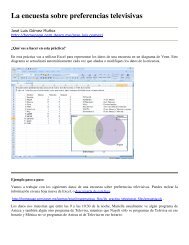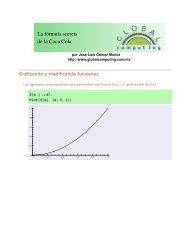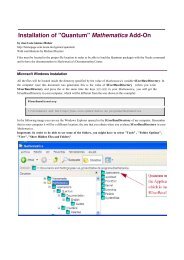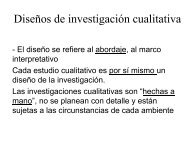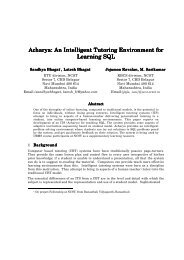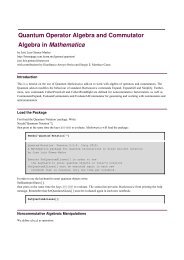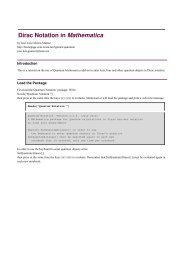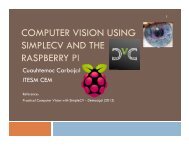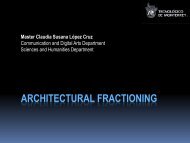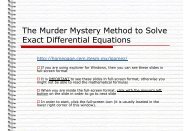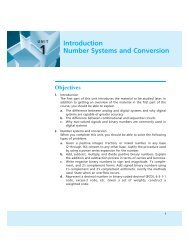Instruction Sets
Instruction Sets
Instruction Sets
You also want an ePaper? Increase the reach of your titles
YUMPU automatically turns print PDFs into web optimized ePapers that Google loves.
74 CHAPTER 2 <strong>Instruction</strong> <strong>Sets</strong>to return. To properly return, we must save the PC value when the procedure/function is called and, when the procedure is finished, set the PC to the address ofthe instruction just after the call to the procedure. (You don’t want to endlesslyexecute the procedure,after all.) The branch-and-link instruction is used in theARMfor procedure calls. For instance,BL foowill perform a branch and link to the code starting at location foo (using PC-relativeaddressing,of course).The branch and link is much like a branch,except that beforebranching it stores the current PC value in r14. Thus, to return from a procedure,you simply move the value of r14 to r15:MOV r15,r14You should not, of course, overwrite the PC value stored in r14 during theprocedure.But this mechanism only lets us call procedures one level deep. If, for example,we call a C function within another C function, the second function call willoverwrite r14,destroying the return address for the first function call.The standardprocedure for allowing nested procedure calls (including recursive procedure calls)is to build a stack,as illustrated in Figure 2.16.The C code shows a series of functionsthat call other functions: f1( ) calls f2( ), which in turn calls f3( ). The right side ofvoid f1(int a) {f2(a);}void f2(int r) {f3(r,5);}f3f2Growthvoid f3(int x, int y) {g5 x 1 y;}main() {f1(xyz);}f1Function call stackFIGURE 2.16C codeNested function calls and stacks.



